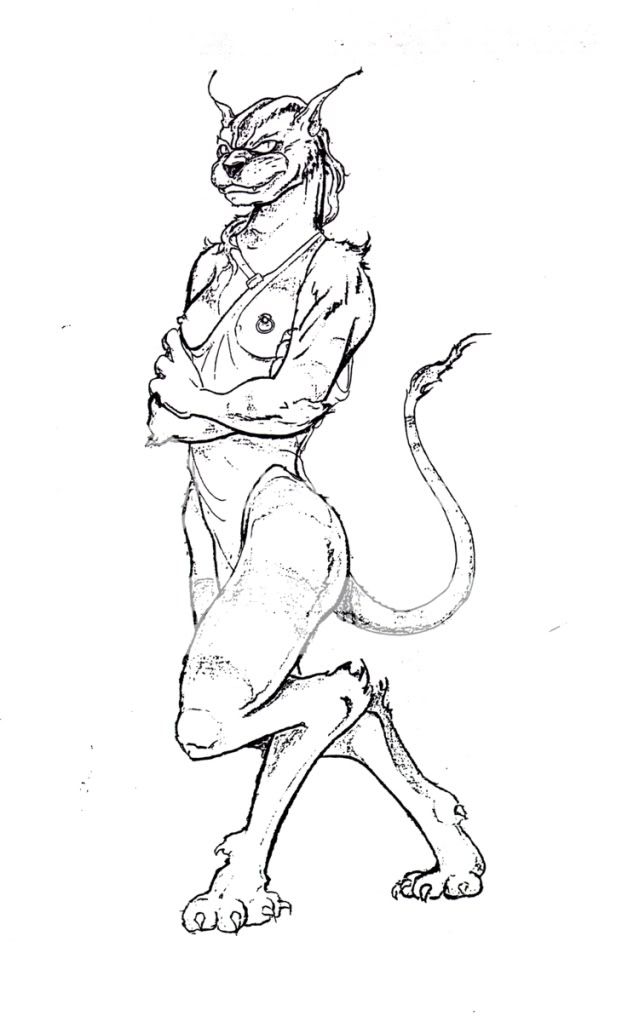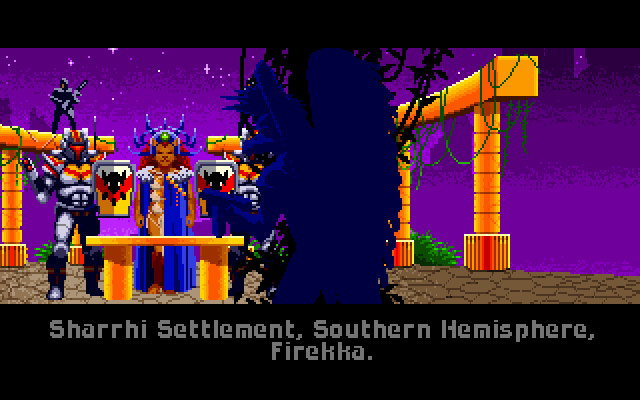Ok, this is going to a bit long, so make a sandwich, get a drink, use the bathroom, whatever.
This brings up some interesting questions about Kilrathi social structure.
In many human societies, the poor or peasant class often had large families for two reasons: first off, infant and child mortality rates were very high; secondly, the family needed more hand to work the land. Other factors, economic, religions, ect have perpetuated this into the modern era.
However, royalty and nobility have always had lots of kids, because they could afford to have many heirs. Charlemagne had twenty children over the course of his life with eight of his ten known wives or concubines.
In ancient China, the imperial family was made up of the Emperor as the head and the empress as the primary consort and “Mother of the Nation”. In addition, the emperor had a series of other consorts and concubines ranked by importance into a harem, in which the empress was supreme.
Every dynasty had its set of rules regarding the numerical make up of the harem. During the Qing Dynasty (1644–1911), for example, imperial convention dictated that at any given time there should be one Empress, one "Imperial Noble Consort", two “Noble Concubine”, four “Consort in Ordinary” and six “Imperial Concubines”, plus an unlimited number of other consorts and concubines.
Although the emperor had the highest status by law, by tradition and precedent the mother of the emperor, i.e., the Empress Dowager, usually received the greatest respect in the palace and was the decision maker in most family affairs. At times, especially when a young emperor was on the throne, she was the de facto ruler. The emperor's children, the princes and princesses, were often referred to by their order of birth, e.g., Eldest Prince, Third Princess, etc. The princes were often given titles of peerage once they reached adulthood. The emperor's brothers and uncles served in court by law, and held equal status with other court officials. The emperor was always elevated above all others despite any chronological or generational superiority.
It is likely that the Kilrathi Imperial families are organized in a similar manner, though knowing their penchant for the number eight, these figures could be radicly different.
Now, to Kilrathi physiology.
Generally the rule of thumb is the large the species, the fewer offspring it has at one time. This has to do with the amount of energy, food, time, ect. needed for gestation and child rearing. Smaller animals generally reproduce often and in large numbers simple because their small size puts them lower on the food chain. A single female rat can spawn hundreds of young in its short life time, while a long lived blue whale may only have a dozen or so. This (in a simplified way) is why industrialized hunting and climate change have driven the blue whale nearly to extinction, while the common rat, despite all the cats, poisons and traps, flourishes.
Since the Kilrathi are much larger than your average house-cat, let us look at the genus Panthera instead. Among the “big cats”:
-Lions typically have 1-4 cubs.
-Leopard cubs are usually born in a litter of 2–4.
-Jaguars females give birth to 1-4 cubs, and most commonly to two.
-Tigers litter size usually consists of around 3–4 cubs
It is of note that over the course of her life, a female tiger will give birth to an approximately equal number of male and female cubs. If the Kilrathi are similar, then this could be used to factor in population figures and birth rate.
Overall the between 40 to 50 percent survive their first or second year. But this has to do with the dangerous environment they live in.
The picture on the wall of the Shrine appear to depict a Kilrathi female with only two visible sets of pectoral breasts.
Princess Zukara from WCA is shown with two pectoral breasts which appear flatter than the human equivalent, though this might be the fault of the flight suit.
The priestess, however, appears to be wearing three bikini tops
It should be note that with the first two examples, only the upper pectoral breasts are visible, and that smaller mammary glands may be located on the thorax.
Most other mammals tend to have less conspicuous mammary glands than humans, protruding only while actually filling with milk. The number and positioning of complex and simple mammary glands varies widely in different mammals. The nipples and glands can occur anywhere along the two milk lines, two roughly-parallel lines along the ventral aspect of the body. In general most mammals develop mammary glands in pairs along these lines, with a number approximating the number of young typically birthed at a time.
Now this doesn’t always mean number of breasts = number of offspring.
Look at human females; two breast but usually only one child at a time. Twins are doable, but what if you have triplets, or more? Well you get wet-nurses, but that’s beside the point.
It’s very well probable that he Kilrathi give birth to 1-4 or 1-6 young, with the average being a litter of two or three.
As for the number of breasts, the Kilrathi females may have two protruding pectoral breasts and two smaller sets which my only protrude after she has given birth, or perhaps is pregnant or nursing.




